Professional conflict sim ponderer Arrigo Velicogna has very kindly agreed to assess some cardboard solitaire wargames for Tally-Ho Corner. In his first column the ex King’s College London lecturer takes a look at a diversion in which the player’s goal is brutalising high-flying B-17s and B-24s in the skies above the Reich.
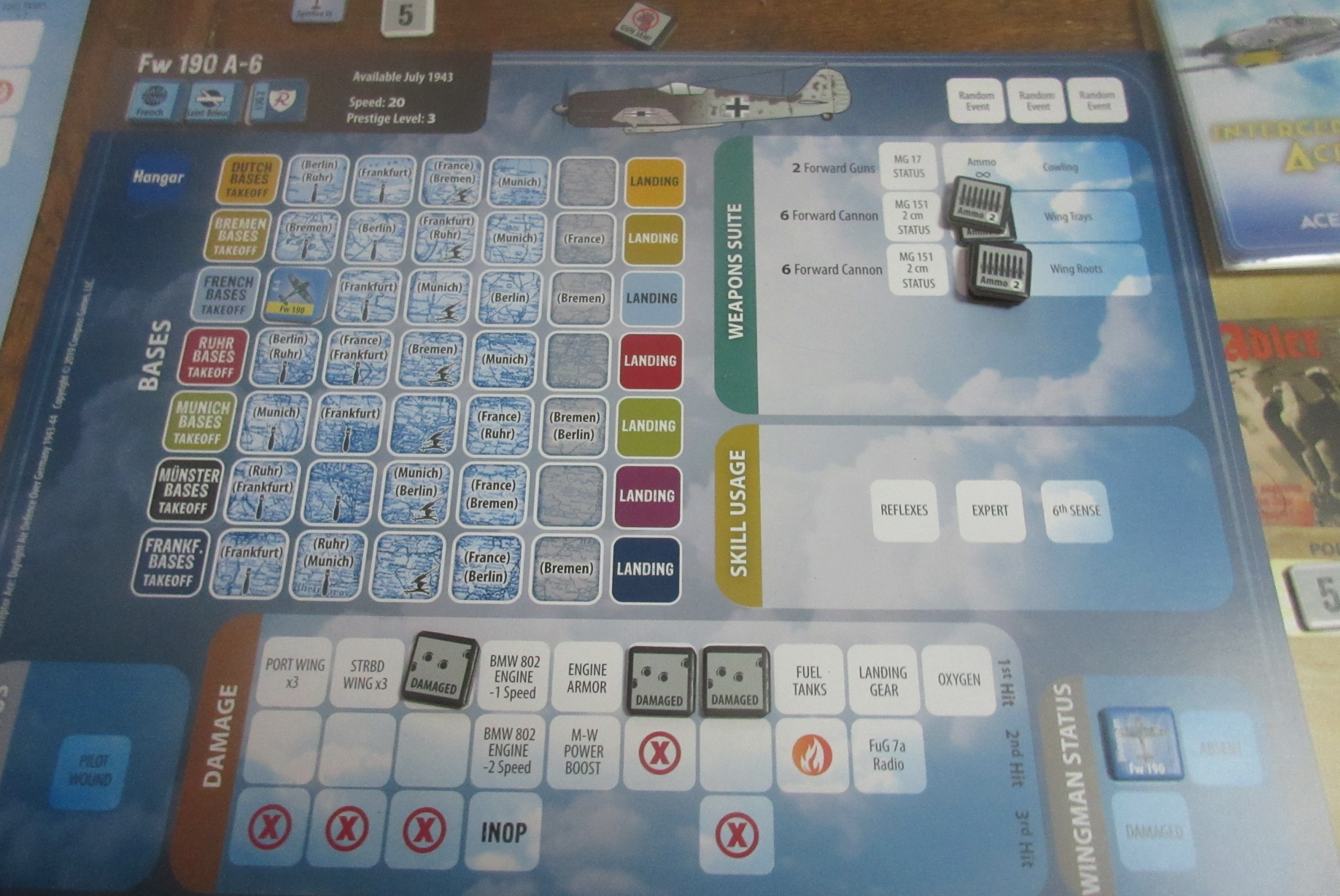
“Interceptor Ace is a two volume game portraying the career (long or short depending on your decisions and fate) of a German fighter pilot defending Germany from the ever-increasing onslaught of the American daylight bombing campaign. Volume 1 ($99) starts in March 1943 and ends in February 1944. Volume 2 ($89) models the final year of hostilities, and opens up the possibility of seamless 1943-45 careers.
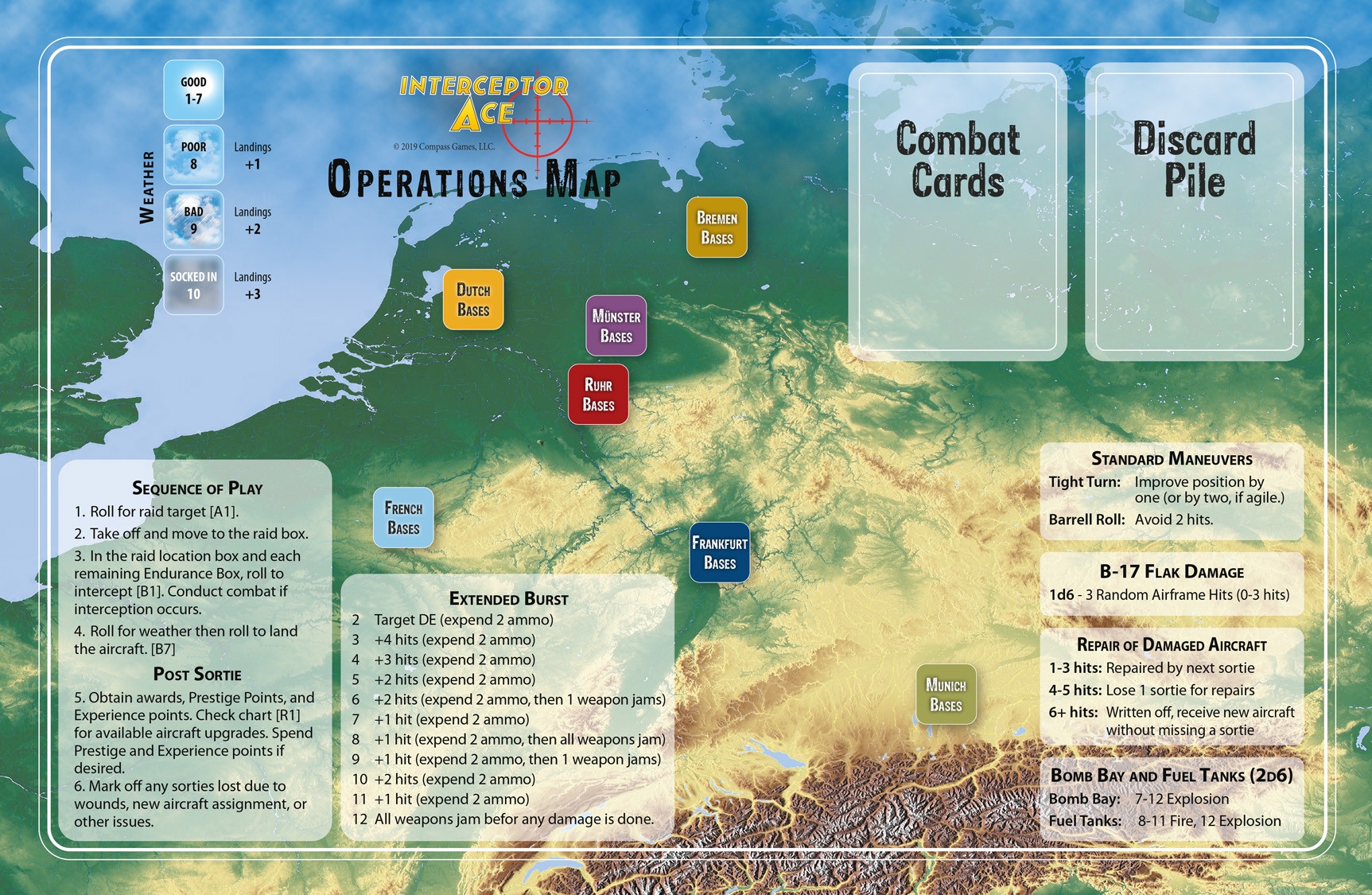
This is not your usual map and counters game. You have a status card representing your fighter, another representing your target, and, if you play with the optional rules, also one representing your position relative to your target. Yes, there is a small map, but it is only used to record the geographical zone of the target of the current raid. Combat is resolved exclusively with cards. Counters are used mainly to record various status and damages. Finally, there is the personal display mat, on which you place decorations, rank badges, and keep track of your experience, prestige, and skills.
I imagine a few people reading this will be wondering how a small collection of cards, mats, and tables can function as a worthwhile simulation. Well, a simulation is an abstract recreation of reality, and, as I’ll endeavour to explain, I think Interceptor Ace does a good job of recreating reality.
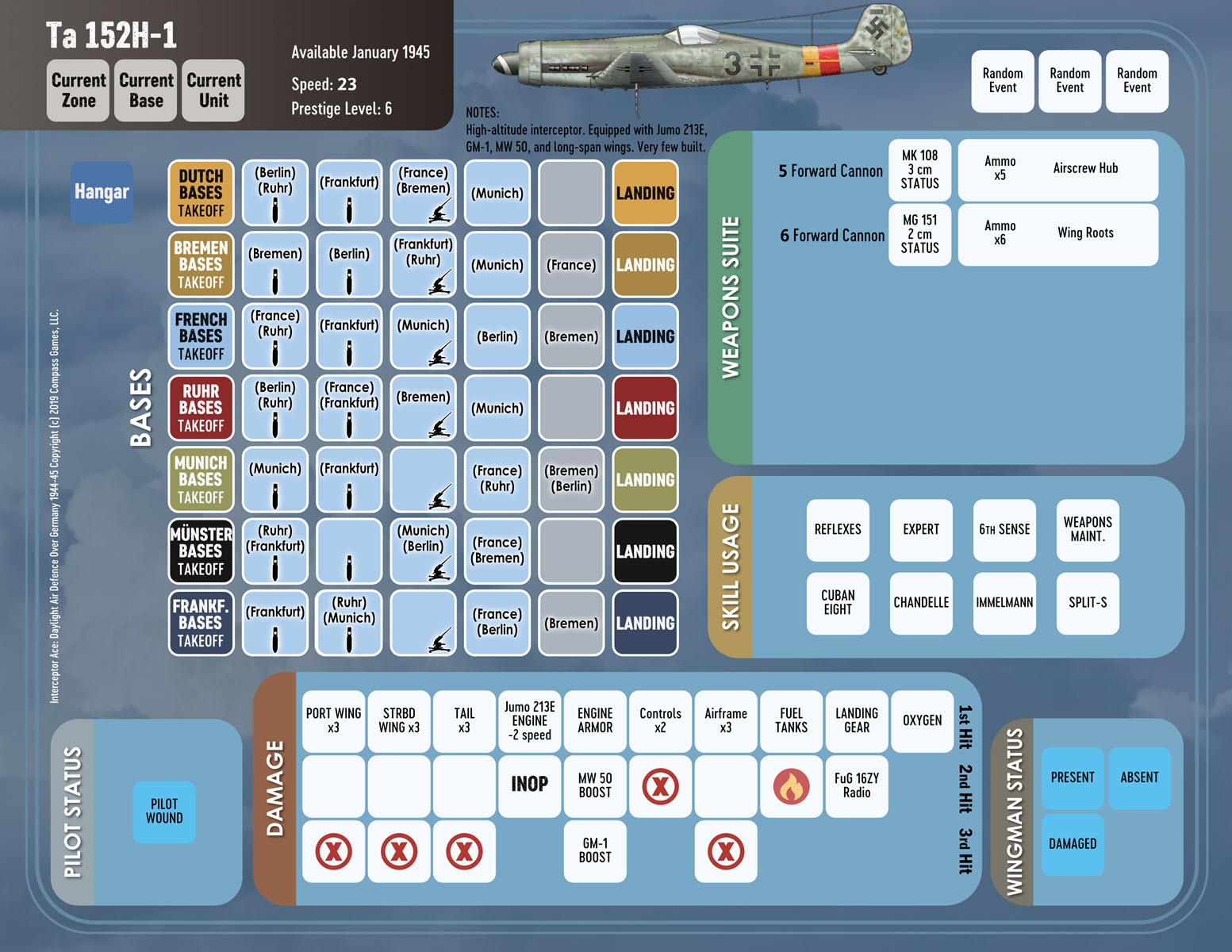
Let’s talk aeroplanes. There are a whopping thirty different models of Bf-109, Bf-110, Me-410, and FW-190 available. Each model has a detailed damage chart and armament description. A Bf-109G1 for example is equipped with a 20mm MK 151 and two MG 17s. A G6/R6 has a brace of MG 131 machine guns, plus the MK 151 in the airscrew hub, but adds another two MK 151 20mm guns in underwing gondolas. Fuel is also a consideration, with the longer legged FW-190 able to spend more time in the air following and intercepting raids. Heavy fighters have even longer range, pack more punch, but they also have their own limitations. Allied aircrafts are treated the same way, with B-17 and B-24 bombers represented with detailed damage models, and the differences in firepower between B-17F and G considered. Only four Allied fighters are represented – Spitfire MK IX, P38G, P-51B/C and the ubiquitous P-47C/D. The game only covers fighter operations against heavy bomber raids, so Marauders, Mitchells, and the like don’t feature.
Game play is quite simple at first glance. You generate a raid, check weather, take off, reach the raid, intercept it, then land. There are on average eight raids per month so, except for premature ends, campaigns can be time-consuming. During flight you can either intercept your raid (with bombers still loaded, or after their run, but with flak damage), or encounter enemy fighters or other ‘impediments’.
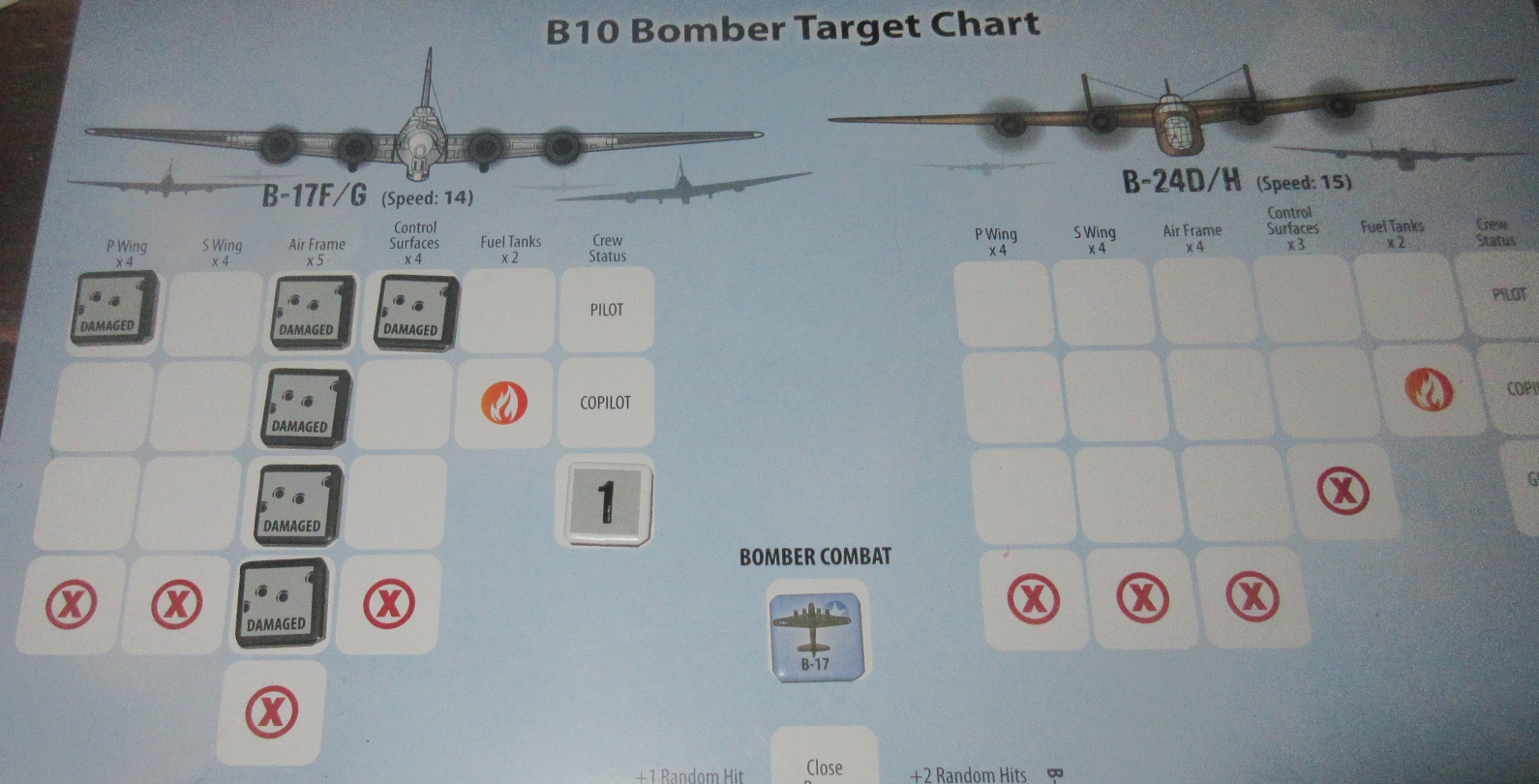
Orchestrating combat isn’t complicated. There are three possible ranges, long, medium, short, and your fighter moves toward its prey during its pass. If you fire you flip a card and see, based on your firepower, how many (if any) hits you have scored. Then, based on which part of the target you are aiming at (wings, port or starboard, airframe…) you check results using a table. Bombers also flip a card for their defensive fire, and you check on the fighter damage table. Fighter vs fighter mechanics are similar, but introduce positions (advantaged/disadvantaged, tailing/tailed, head on), defensive manoeuvres, and after each firing pass there’s a roll to see if there’s a position change. Your wingmen are treated in an abstract manner, but can be influential.
Now this may seem simplistic, almost robotic, at first glance, but thankfully the player has numerous meaningful choices to make. How you fire your weapons, in normal or long bursts, at which range, and where you aim, is critical. So too is deciding when to break off from your initial pass and whether to attempt a second one. Range affects firing both ways. The closer you get, the more damage you inflict, but also the more you are likely to receive.
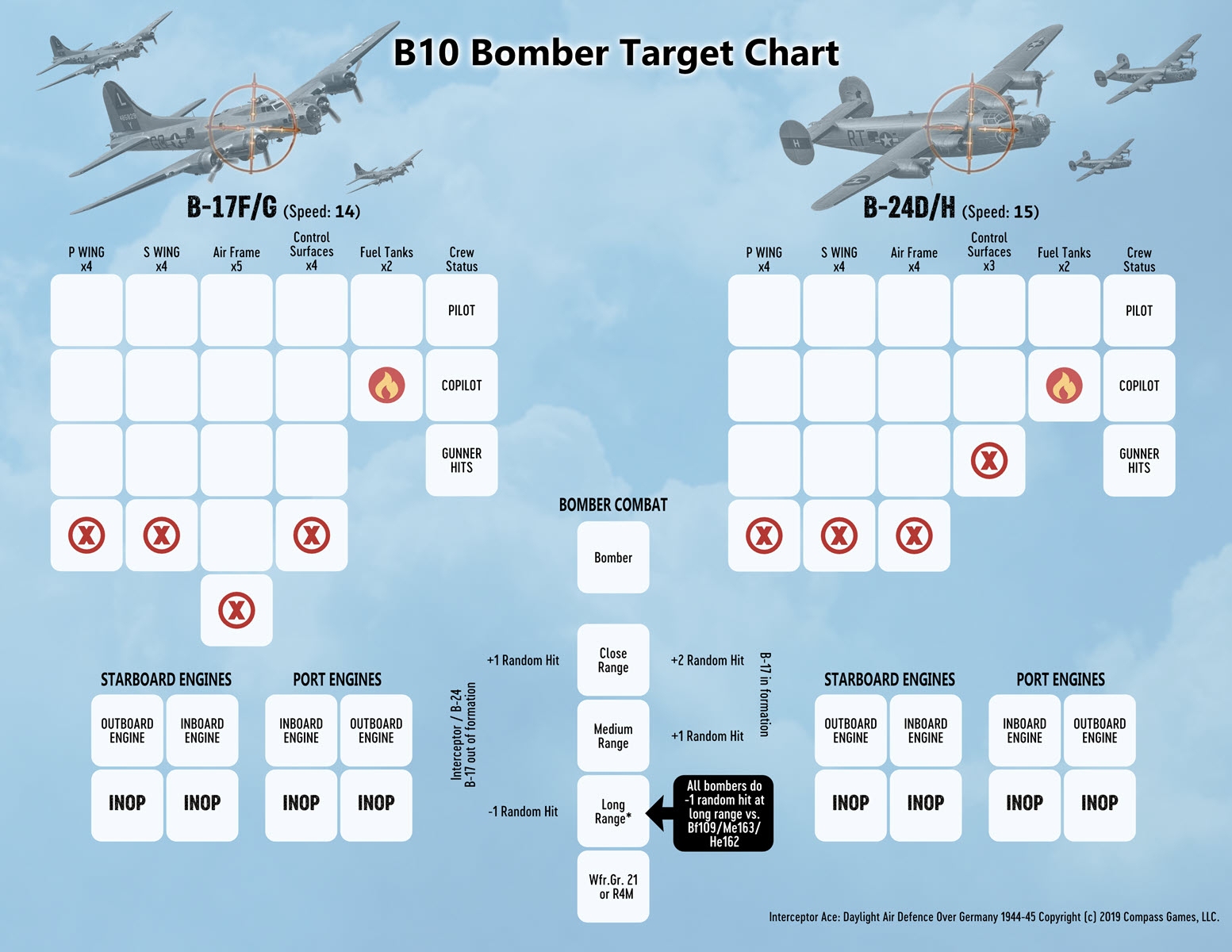
Bombers aren’t crude hitpoint heaps. Hitting gunners reduces return fire. Riddled fuel tanks can leak, ignite, or explode. A bomber with damaged engines or wounded pilots can fall out of formation (out of formation aircraft are a little less dangerous). While plenty of these effects are random, your point of aim is also important because it determines the likelihood of potential effects. Concentrate on one wing and the bomber may fall out of formation, making a second pass easier for example.
And then there is ammo. Except for machine guns, ammo is a finite commodity. The Bf-109G1 for example has only three bursts of ammo for its 20mm gun. Fire these three bursts (or one extended and one normal burst) and then you have only the cowling MGs at your diposal.
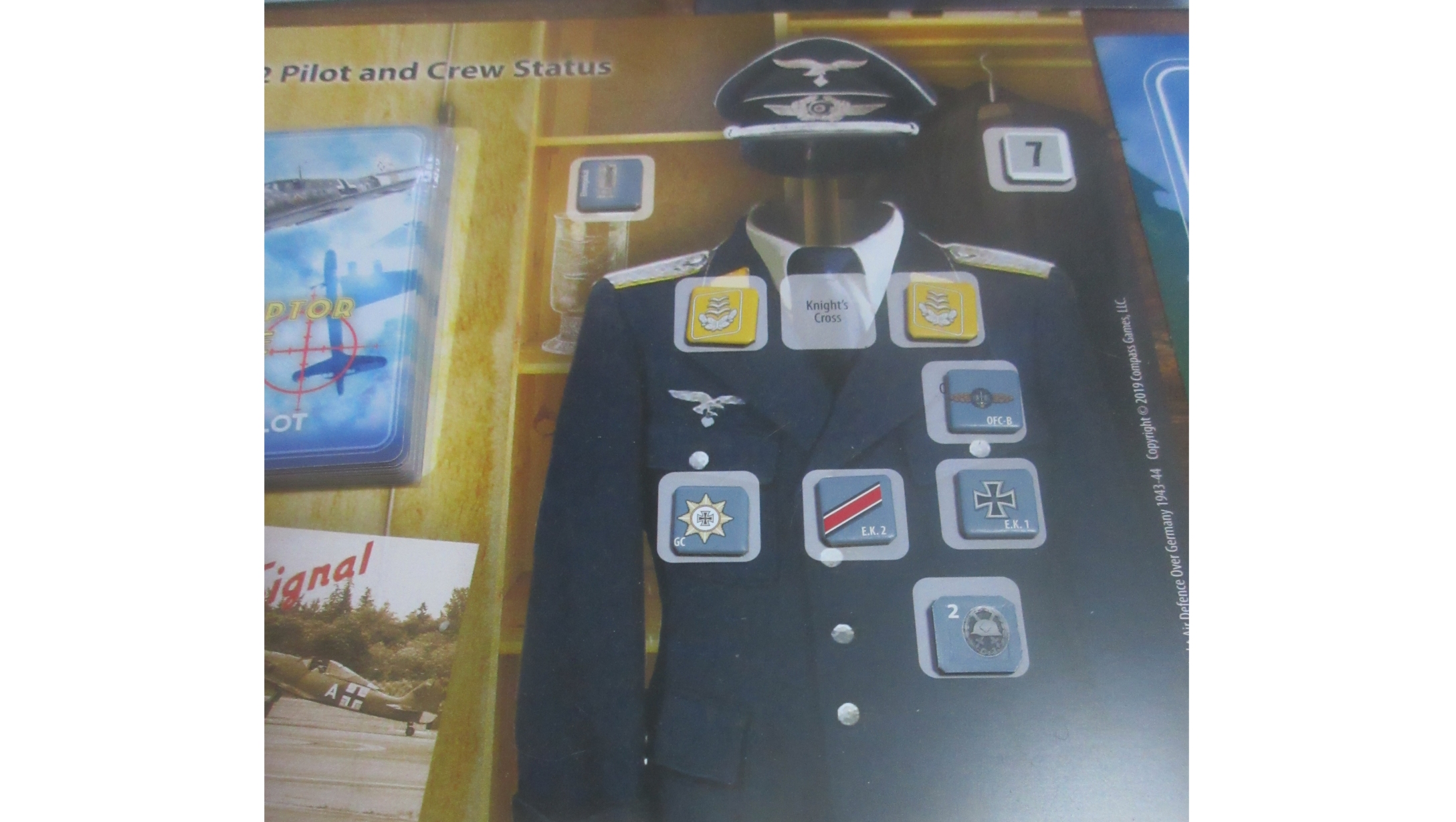
Managing combat is the core of Interceptor Ace. You are a trained pilot so flying itself is irrelevant. It is how you approach interceptions that matters. Aggressiveness can be rewarded with success or death. The longer you live, the more prestige and experience you amass. Prestige can be spent on perks like commandeering another aircraft if yours is in repair, or getting a decent wingman if your original one has been shot down. Experience allows you to gain skills, perform advanced manoeuvres, and improve ammo management.
All this happens in an environment constantly changing, and not for the better. In 1943 raids are unescorted, and at start you can even encounter ‘frail’ B-24s. As time passes the number and quality of enemy fighters increases inexorably. Eventually you have to deal with hordes of the formidable B17G.
Despite some older ideas about the relationship between interceptor and escorts, recent research has conclusively demonstrated that escorts, except when massively outnumbered or badly out of position, always caused problems for the attackers. So either you engage the fighters first, or you tackle the bombers immediately, knowing, unless you are extremely lucky (1 or 2 on a D6…) you’ll end up with a bandit pouncing on you. Choose to engage the escorts first, and the bombers will move away, and you will have to re-intercept the box.
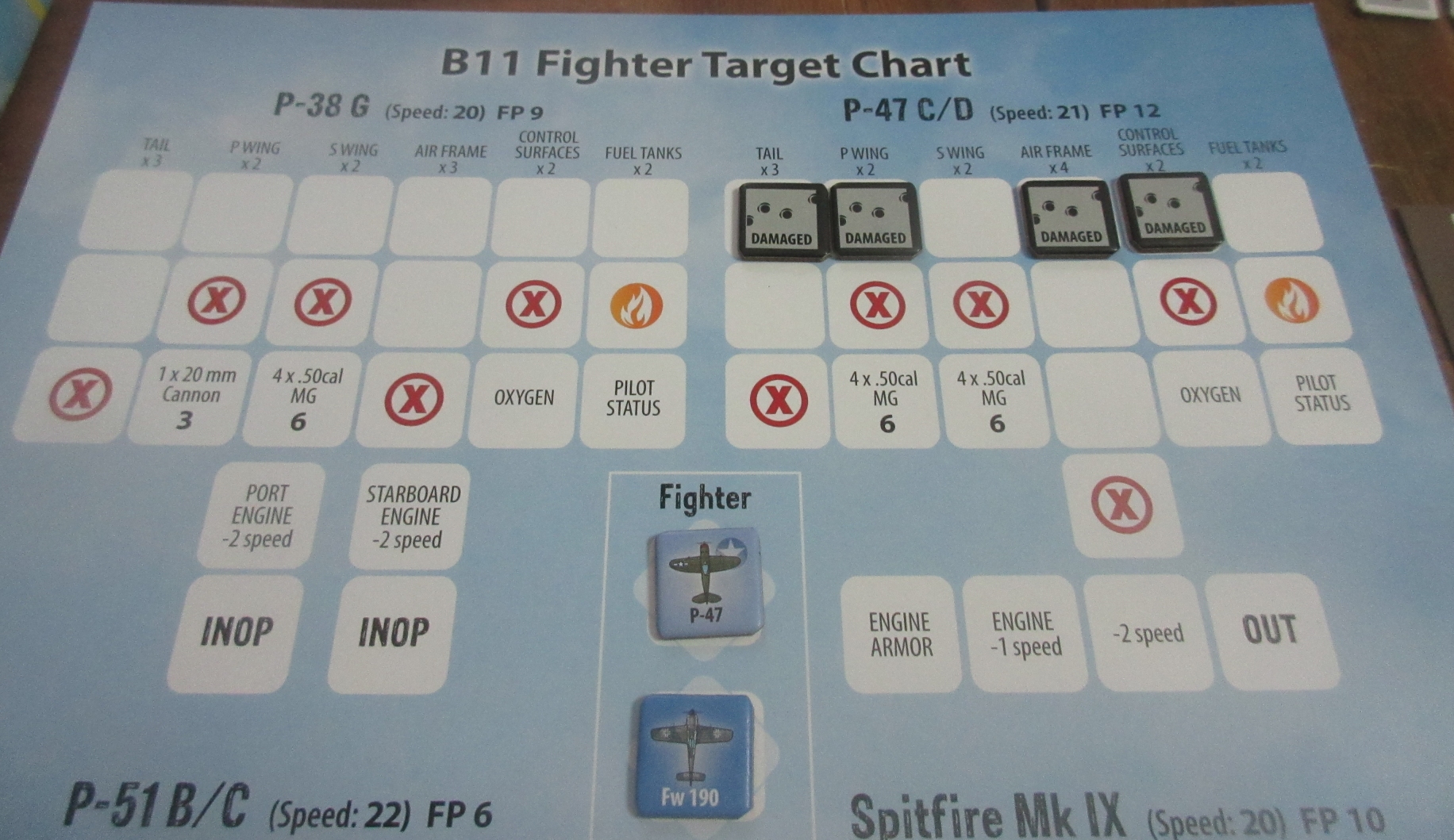
Everything feels right about Interceptor Ace. The planes, friendly and enemy, each have their own flavour. Dogfighting a P-47 is a different experience than dogfighting a Spitfire. The latter’s manoeuvrability seems to constantly spoil your aim… the differences in armament, robustness, agility are all there. There is also the constant up-arming of German fighters with concomitant negative effect on speed. The optional rules increase complexity a little bit, but add plenty of interesting elements. I’ve realised fatigue (something you never see modelled in computer flight simulations) and bomber attack positions are a must.
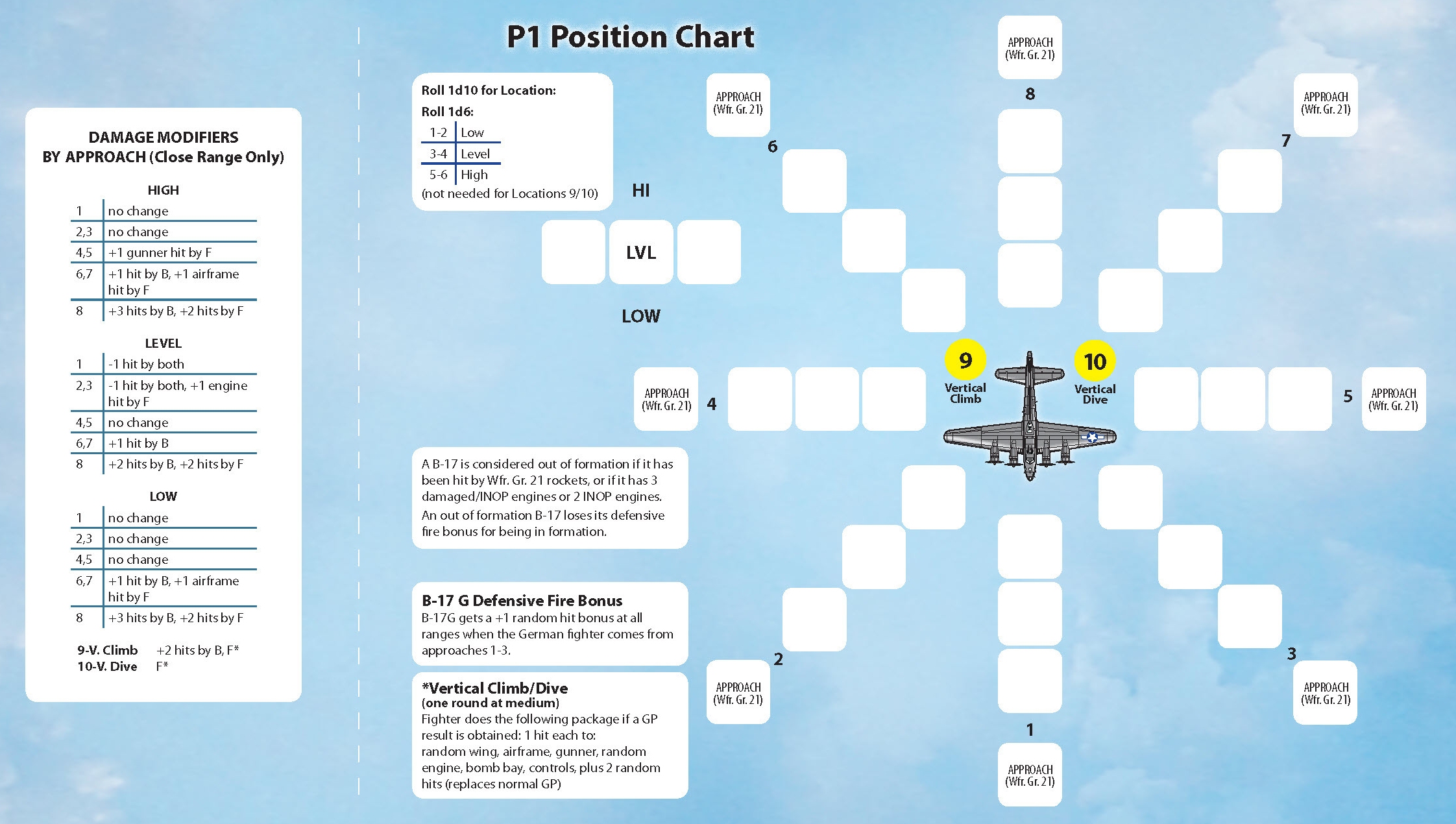
Volume 2 builds on Volume 1, introducing even more fighter types on each side, including the German jets, a more detailed position systems, more detailed used of wingmen, scenarios, and shorter campaigns. If you have both you can play a long campaign, and also integrate the new additions into the first volume.
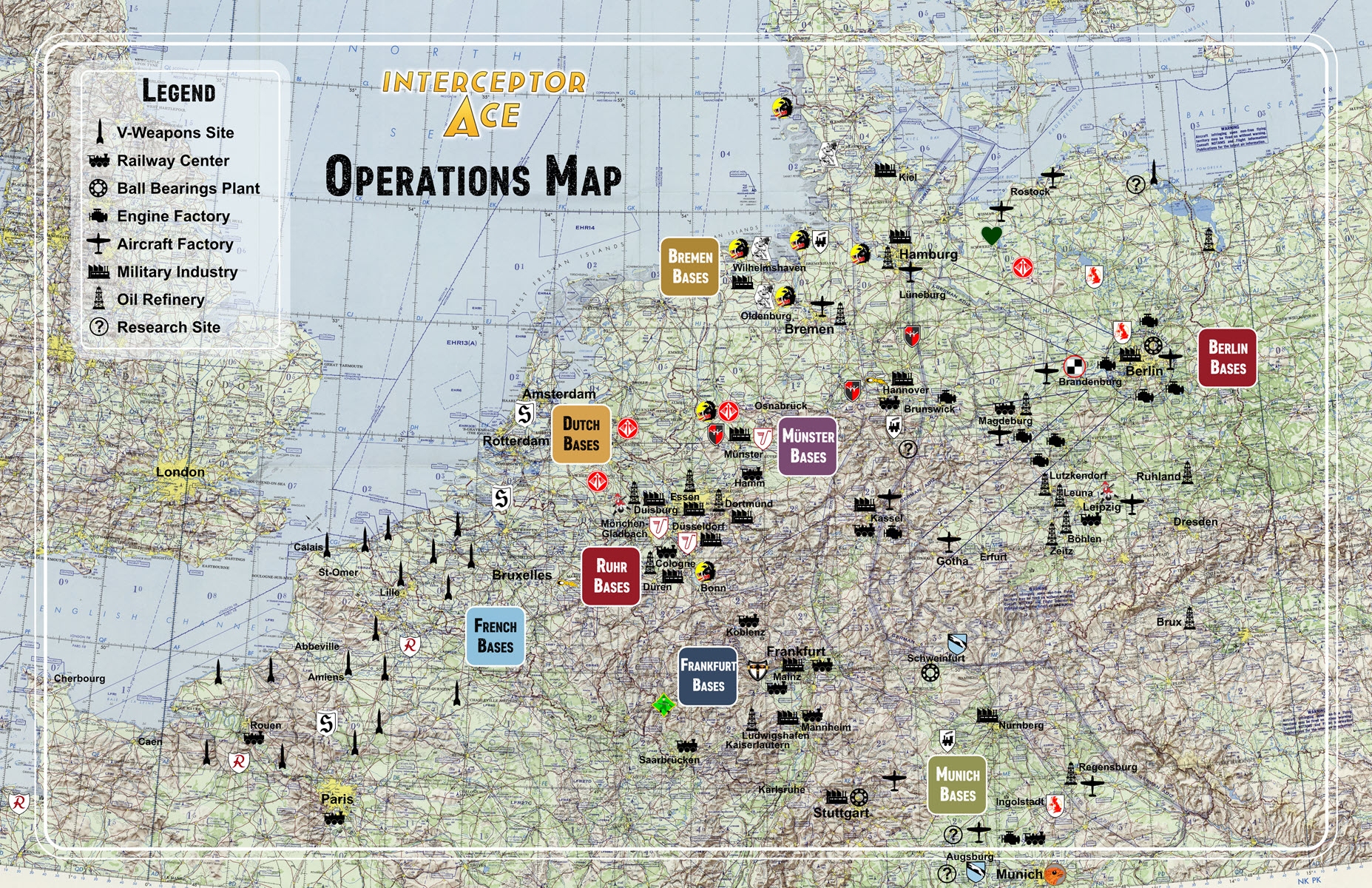
Speaking generally, solitaire games can be either too random, or too scripted. At times they are too simplistic reducing the player to a spectator. However, Interceptor Ace avoids this pitfall. It thrusts you into the centre of the action, and, because it focuses on the pilot rather than the aircraft, doesn’t overwhelm with complexity. It is a far cry from the fiddly, mechanical approach to air combat found in wargames like Fighting Wings or, scary, Birds of Prey.
The nicely judged abstraction means it is well suited to playing solo and should appeal even if you’re not a rabid air-combat fan. Yes, some may complain about the fact that flipping random cards for manoeuvres reduces player agency, but you can always perform Tight Turns and Barrel Rolls, and you can learn more advanced ones using your experience points. Also it is not that you are doing manoeuvres randomly, the card dictates what manoeuvre, in the swirling combat, you perform successfully. You can always attempt an Immelmann, but only a good pilot will do it well and benefit from it. Investing your experience in learning manoeuvres is thus quite important for survival.
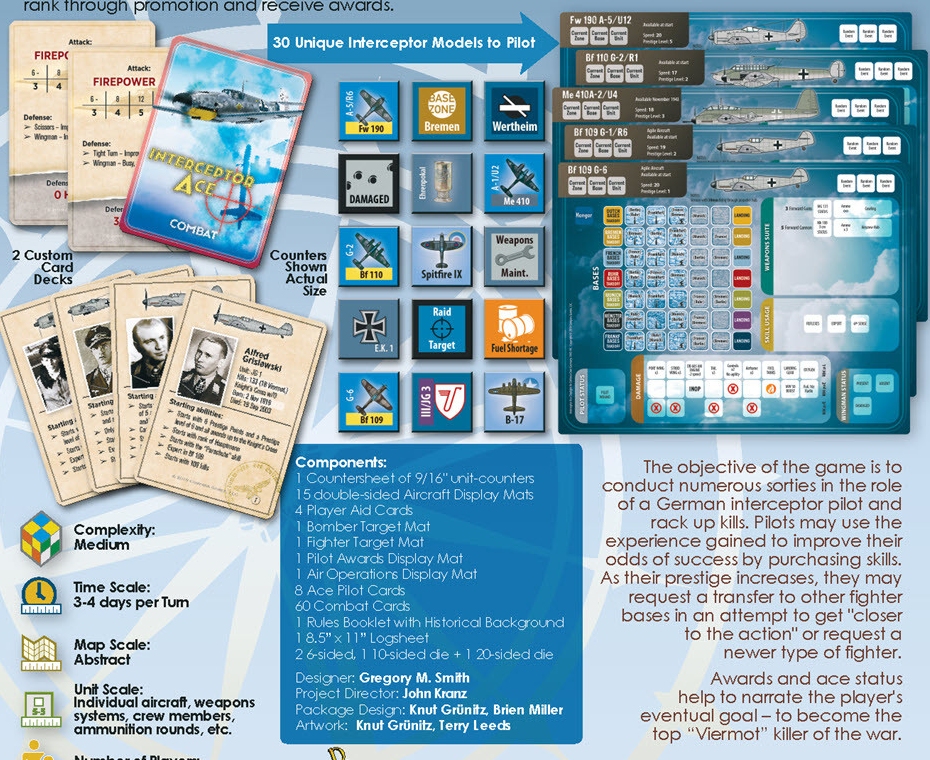
Interceptor Ace brings to the forefront aspects of the air war over the Reich that are usually glossed over by more traditional air combat games. The ongoing arms race between the interceptors and bombers… the importance of survival… the gruelling nature of the bombing campaign. That it does this while involving the player much more than the heirs of B-17: Queen of the Skies do, is especially commendable.
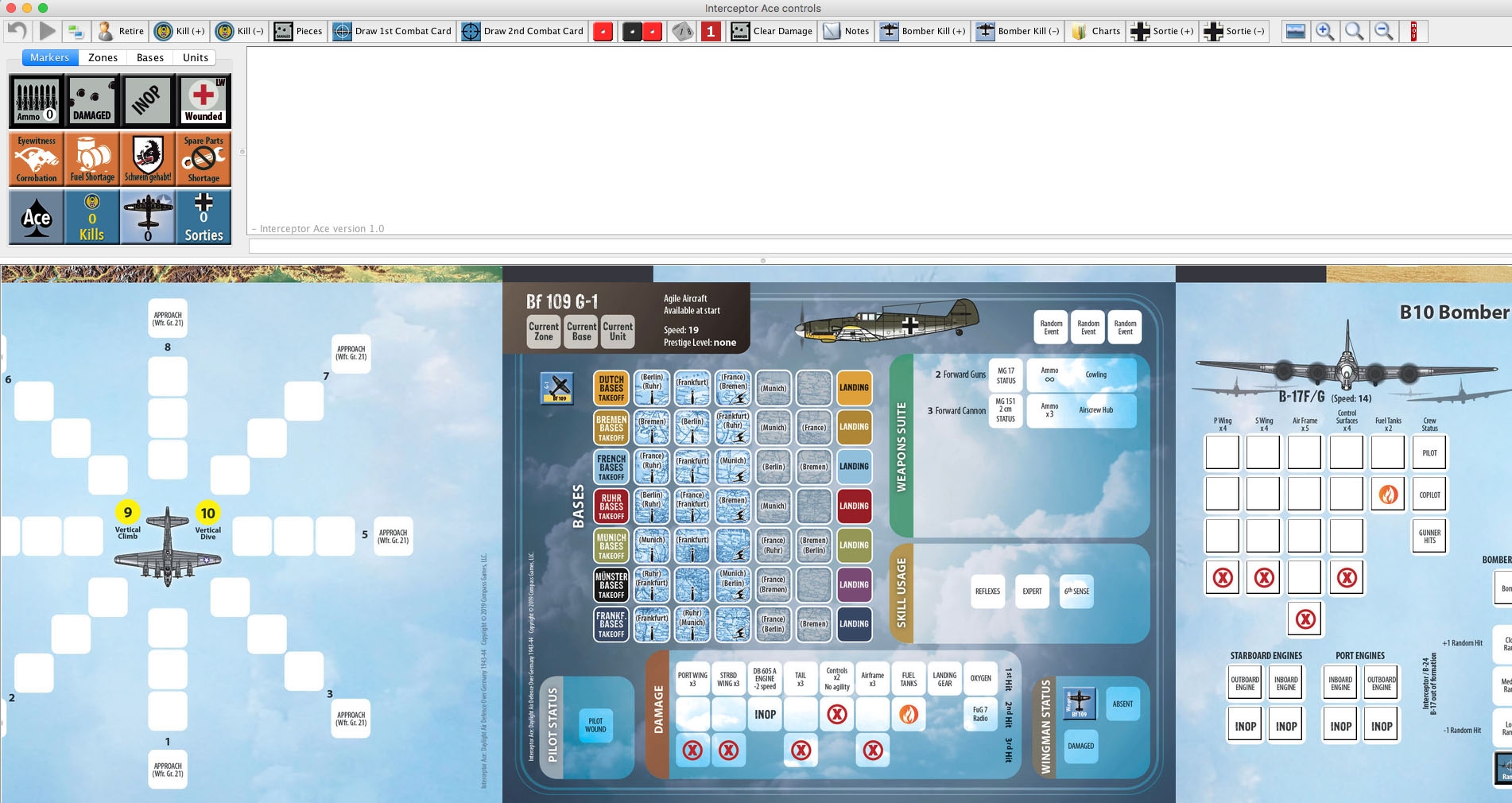
Vassal modules and a free officially-sanctioned rules pdf and make it possible to try both volumes of this great game for free.”

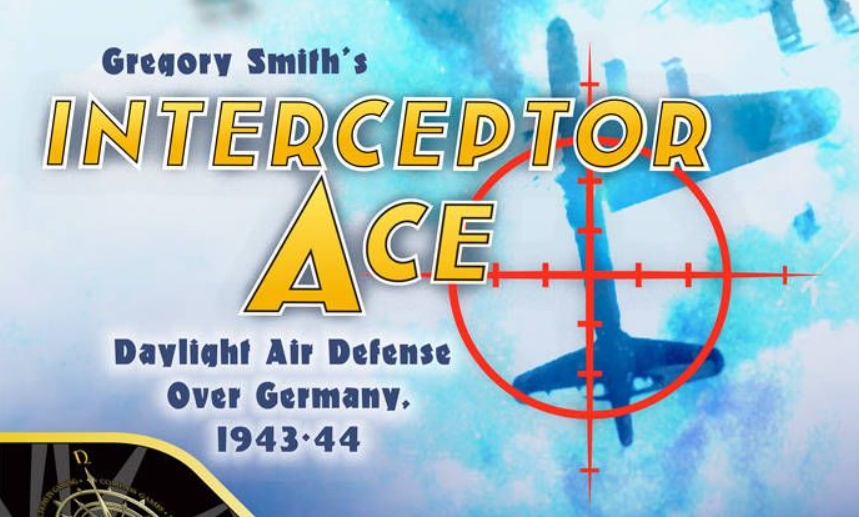
Highly recommend you check out Skies Above Britain. One of the best solitaire games I’ve ever played.
It is on the list for an in depth look, but the Skies series is quite different you are not a single pilot, but a squadron leader. You gain in squadron and formation management and also in tactical maneuvering, but you lose a little in single plane detail. I really love the detailed Aircraft mats of the ACE series, and the awful (on my planes) or wonderful (on the target)accumulation of damage marker. Sometime it felt satisfying to bring back to base a completely riddled FW-190. Another thing I like in Ace, is the treatment of wound. When you roll on the serious wound table, praying you will not get a double amputation…
They are indeed good, I have both Skies above Britain and Storm above the Reich, and pre-ordered the new edition of Skies above the Reich.
I love the pilot uniform with rank and awards, it reminds me of games like Luftwaffe Commander, Vietnam ’65, Afghanistan ’11 etc
Yes it is a nice feature. One thing I really loved from it is that these decoration are not pasted on achievements like in Vietnam/Afghanistan (that often do not have any relations on historical reason why these medals are awarded), but reflect then current procedure. They also give you some advantage increasing your prestige. Some even remind you of your own bad luck or stupidity (the wound badge).
I had some fun experience with volume 1 in Vassal (which, to be honest, I am not sure is strictly legal, copyright-wise). It was quite great! The game is very detailed but not overencumbered by token management and/or decisions of no consequence. The good thing, that separates it from many solitaire games, in my opinion, is that decisions in this one seem important. And that there are, in fact, decisions to be made.
However, as many solitaire games, this one suffers when the player gets accustomed to the mechanics. It is quite easy to learn the optimal modus operandi for every given set of circumstances, and after a while it gets almost as plain as Queen of the Skies.
You can always mix things up by changing your plane, for example, but, at least in volume 1, some setups are more advantageous than others and it is psychologically difficult for me to behave suboptimally, when the stakes are me having to replay last 3 hours.
I also loved the separate mechanic, that the game designers sources from a German ace pilot’s diaries, that when you are to receive one of the Germany’s biggest medals, you are presented with an option to bring a revolver and try to make an attempt on Hitler’s life. That is a speck of completely unnecessary and unexpected fun.
Ah, and I wanted to mention that it is REALLY hard to die in this game. It is not difficult to be shot down, but it is quite improbable that you perish. However, until you understand the game, expect to spend just as much time in hospitals or en route to your base as you spend in the air (from the pilot’s perspective, it is just a few dice rolls for the player)
Gobser,
I got your point, but also there are things that transcend from the solitaire approach. Some planes are better than others and some do a specific job better than others, you cannot escape this fact. But I would argue that every plane has its quirks and challenges. For example the heavies are the best bomber destroyers, but you do not want to dive into a dogfight with them. Yes, the 190 is the better all around, but what if you are assigned to another unit? Remember the first unit you are assigned to is random. The 109 seems subpar, and certainly it is not the best of the bomber destroyer, but being agile means you have an edge on the P-47, and also allows you to avoid some hits… as for being difficult to die… well I had a streak of 5 rolls for bail outs… that made me much more cautious afterward.
As for the vassal module… it was done with Compass blessing so…
This post reminded me how much fun a well designed board-game can be. What I really like is that the player seems to make a lot of decisions that drive the gameplay forward.